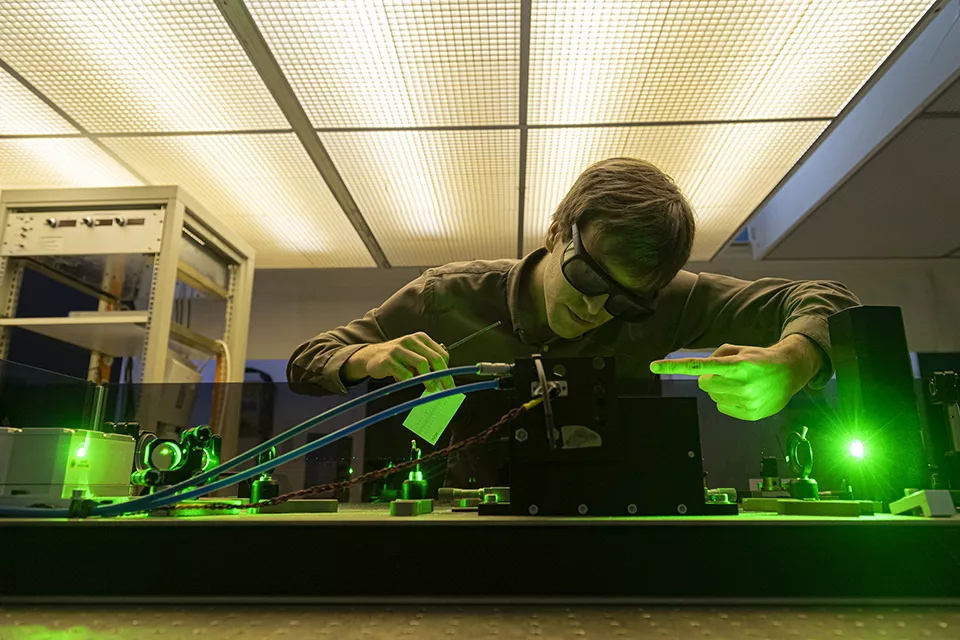Members of the Ultrafast Nano-optics Momentum research group, led by Péter Dombi at the ELKH Wigner Research Centre for Physics, are conducting experiments with femtosecond laser pulses in the modern laser laboratories of the Wigner Centre. Flashes of light (laser pulses) lasting up to a quadrillionth (one millionth of one billionth) of a second make it possible to study many interesting basic physical phenomena and can also be used in sensory and information technology applications. The research team has recently developed a completely new method for determining the electric field of laser light on a scale below the nanometer range in the vicinity of various nanostructures.
When light falls on nanostructure materials, the electric field can become so dense that its strength can increase up to several hundred times. With this method, novel light-matter interactions can be studied, and researchers can achieve external field strength that is comparable to that within atoms. In the laboratories of the UltraFast Nano-optics Research Group at the Wigner Centre equipped with modern lasers, researchers use nanoptic methods to study highly nonlinear phenomena, among other things.
The photos were taken by ELKH's photographer, Márton Kovács.
Nonlinear nanoptic interactions have produced important applications in recent years, for example in the development of ultrafast electron microscopy methods, and pay pave the way to ultrahigh-frequency optical transistors. The Wigner Centre's Ultrafast Nano-optics Research Group published a comprehensive article on this rapidly evolving field of research with German co-authors in the world’s number one physics “review” journal, Reviews of Modern Physics. The authors from the Wigner Centre are Péter Dombi and Zsuzsanna Pápa.
